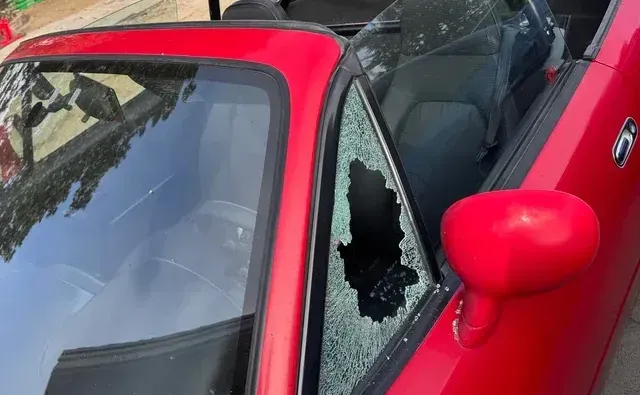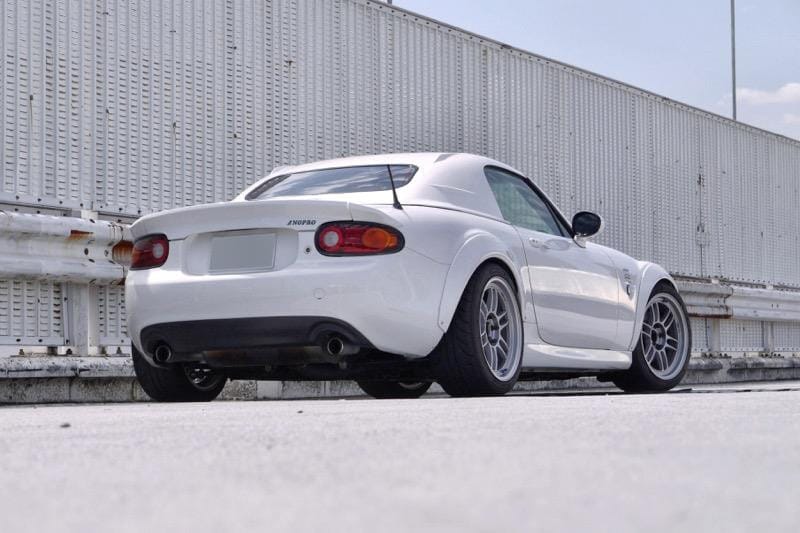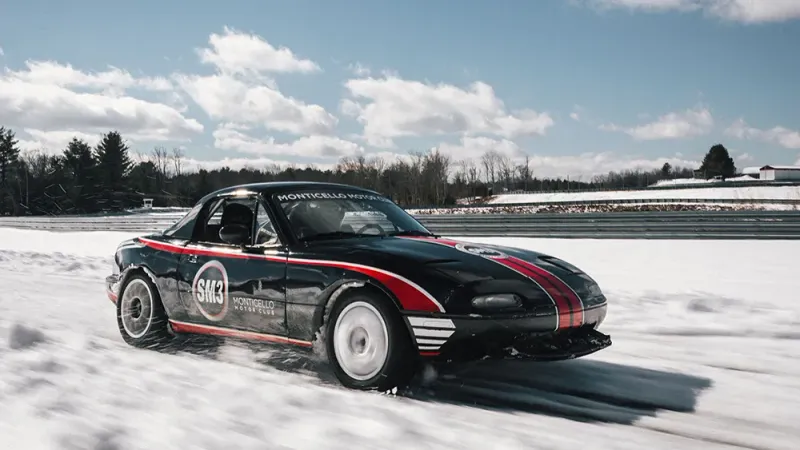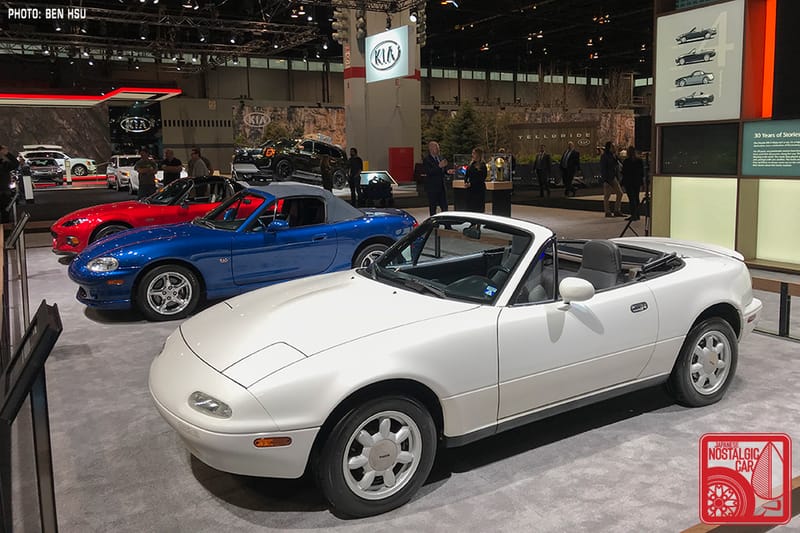Miata Suspension Geometry Explained
Mazda designed the Miata’s suspension for precision and balance, using a double wishbone setup in early generations and a multi-link rear in later models. Learn how Miata suspension tech creates its legendary driving feel.
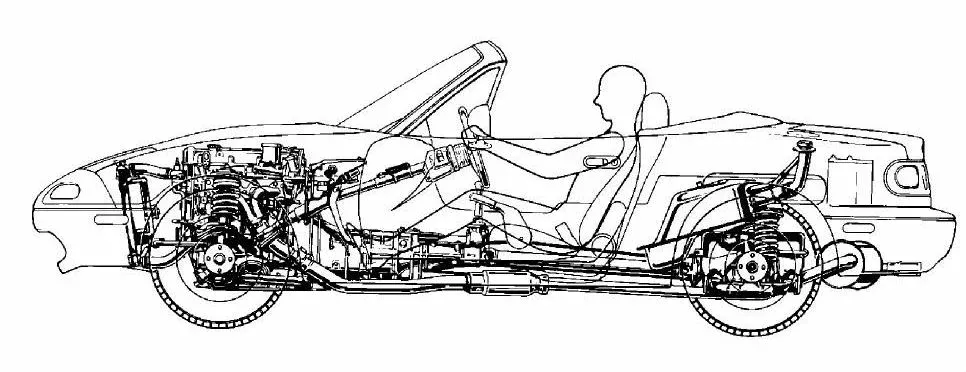
From the moment the Miata debuted, yes, if you’re curious Miata traces all the way back to 1989, Mazda engineered this lightweight roadster to deliver maximum driving fun. A significant factor is the Miata’s double wishbone (and later, multi-link) suspension. Unlike many common MacPherson strut setups, the Miata’s geometry focuses on keeping the tires optimally planted through corners, which gives drivers that famously “connected” feel.
Mazda deliberately chose to prioritize handling precision over lower production costs or simpler packaging. This design ensures the tires stay in consistent contact with the road, no matter the steering angle or body roll, which is exactly why people love the Miata’s nimble and engaging character. The NA (1990–1997) and NB (1999–2005) generations both use a double wishbone setup at all four corners. Starting with the NC (2006–2015) and continuing to the ND (2016–present), the front remains double wishbone while the rear shifts to a multi-link design. Mazda also refined materials, moving from steel to more aluminum components, resulting in reduced weight and improved suspension kinematics across generations.
Double Wishbone vs. Strut
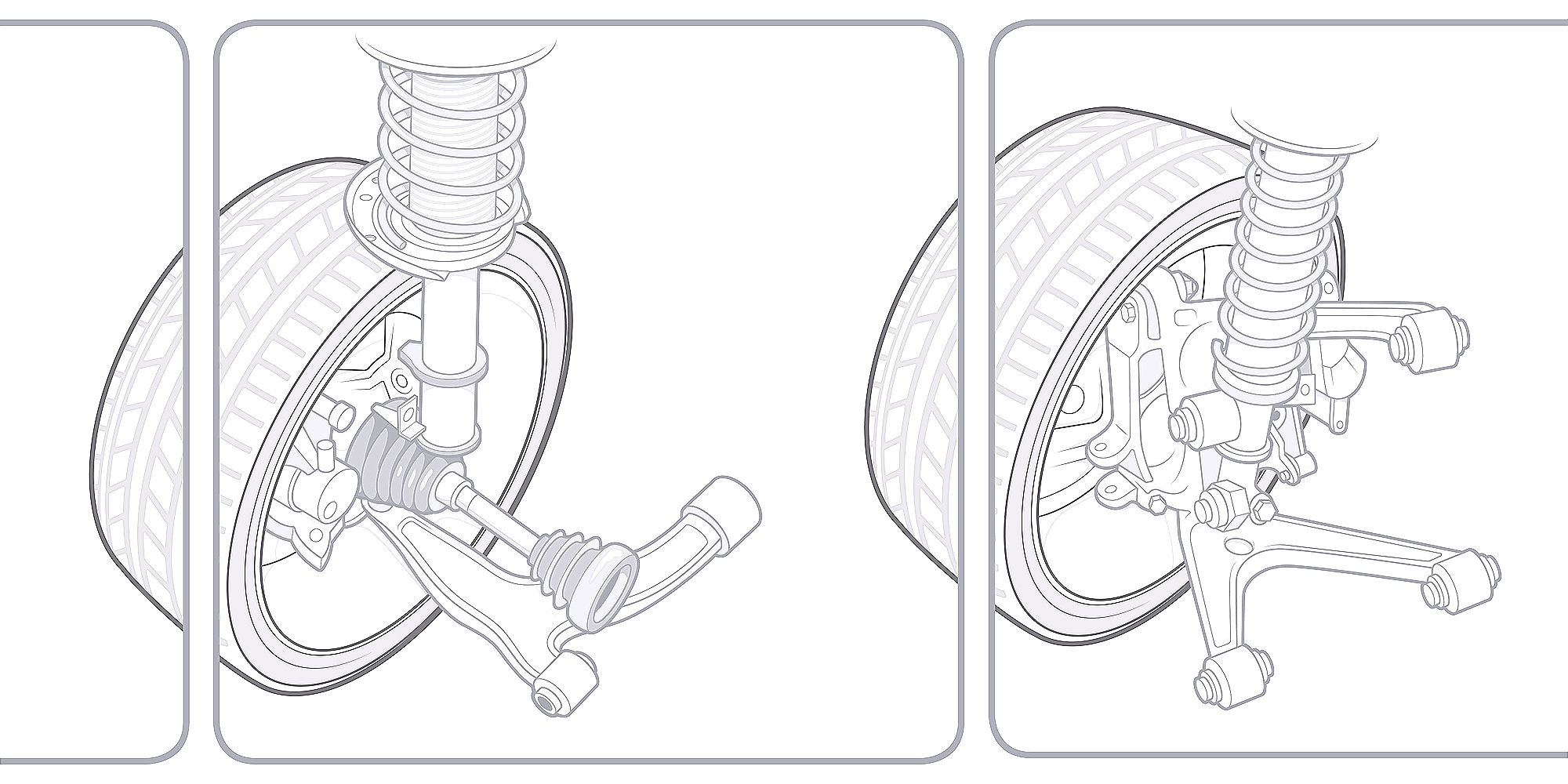
Most everyday cars, especially front-wheel-drive sedans and hatchbacks, use MacPherson struts. In these setups, the strut itself forms a key structural member, bolting to the hub upright at the bottom and the chassis at the top. While this arrangement saves cost and space, it limits how much control an engineer has over camber and other geometry factors. Under cornering loads, lateral forces can cause friction (or “stiction”) in the strut shaft, and strut-based cars often have less favorable camber gain in compression.
By contrast, Miatas, particularly NA/NB, rely on double wishbones. This design uses two control arms (or multiple links in multi-link systems), each pivoting at the subframe and the knuckle. The shock “floats,” primarily handling vertical load without dictating wheel positioning. Engineers can thereby fine-tune alignment changes, like camber, toe, and roll center, throughout the suspension’s travel. This flexibility is one of the key reasons Miatas (especially the early double wishbone ones) are known for their sharp handling and consistent grip.
Generational Layouts: NA to ND
NA (1990–1997) and NB (1999–2005)
The NA and NB generations both feature double wishbone suspension on every corner, made primarily of steel. Eccentric bolts at the inboard mounting points of each control arm make it easy to adjust camber and caster. If you’ve ever wondered “Which Miata Has Pop Up Headlights?”, that would be the NA, the first generation, which arrived back when the Miata debuted in 1989.

NC (2006–2015)
The NC retains a double wishbone front but introduces a multi-link rear to improve packaging around the trunk and driveline. Mazda also begins using aluminum components in the front suspension to reduce unsprung weight, signaling a move toward more advanced materials.

ND (2016–Present)
The ND continues the front double wishbone approach, pairing it with an advanced multi-link rear. Aluminum arms, lightweight knuckles, and monotube Bilstein shocks (in certain trims) show Mazda’s commitment to reducing weight and improving ride and handling. The Powerplant Frame (PPF), an aluminum “spine” linking the transmission to the differential, remains a Miata signature. By the way, the 2023 Miata 0-60 time is as low as 5.7 seconds, proving the MX-5 isn’t just about cornering, it’s also impressively quick off the line.

Detailed Geometry Breakdown
Front Suspension Geometry
Miatas feature an upper and lower control arm (commonly called “A-arms”) that pivot at the subframe and attach via a ball joint to the upright/knuckle. The shock itself isn’t a structural pivot; it just handles vertical load. That’s why you don’t see the same benefit from “camber plates” on a Miata as you would on a MacPherson-strut car.

The steering rack is often mounted ahead of the axle centerline (a front-steer arrangement), helping maintain direct steering response. NA/NB knuckles are typically cast iron or steel, while the NC and ND use aluminum versions, reducing unsprung mass. Because the coilover mounts inboard on the lower control arm, the motion ratio is usually around 0.7:1, meaning the shock travels less than the wheel. Each arm’s inboard pivot has an eccentric bolt, making it easy to dial in camber and caster.
Rear Suspension Geometry
NA and NB generations retain a double wishbone layout in the rear, one of the hallmarks of the original Miata’s “pure” sports car design. The NC and ND, meanwhile, switch to a multi-link arrangement with five links, controlling how toe and camber change as the suspension compresses. This slightly toes in the outside rear wheel under load for stability.

An especially unique element is the Powerplant Frame (PPF), a rigid aluminum piece connecting the transmission to the differential nose. This feature reduces differential movement under throttle changes, giving the Miata a famously direct, predictable feel. Many Miatas also come with a limited-slip differential (LSD), aiding traction in corners.
Key Geometry Factors & Their Effects
Camber Gain
Camber gain refers to how much negative camber the wheel gains as it compresses in a turn. Properly tuned, it keeps the tire contact patch flatter on the road during body roll, improving lateral grip.
Toe Curves & Bump Steer
NC and ND models use their multi-link rear to create a mild toe-in effect on the outside wheel under compression, enhancing stability. Meanwhile, the front double wishbone design is naturally less prone to extreme bump steer, though tie-rod angles and alignment remain important.
Roll Center
The roll center is a virtual point around which the car’s body “rolls.” Miatas have a relatively low roll center, helping them feel agile and planted. Lowering a Miata too far can drop the roll center excessively, causing larger roll moments. This is why many enthusiasts use “roll center correction” or “extended ball joint” kits.
Steering Axis Inclination (SAI/KPI)
SAI (also called KPI) is the angle formed by a line through the upper and lower ball joints. It affects steering feel, self-centering, and scrub radius. Miatas balance a moderate KPI to allow agility without sacrificing stability.
Motion Ratios & Shock Tuning
Because the shock typically travels less than the wheel (due to inboard mounting), the car requires stiffer springs or damping to achieve the same wheel control. Mazda does a great job calibrating spring and damper rates for a blend of comfort and performance.
Strut Braces & Shock Tower Braces
Strut tower braces yield more dramatic results in MacPherson-strut vehicles, where the top of the tower handles considerable lateral loads. In a Miata’s double wishbone or multi-link setup, the coilover mostly deals with vertical forces. So while a front shock tower brace can offer some improvement, it won’t revolutionize chassis stiffness the way it might in a strut-based design.
In the rear, cars with large open trunk areas often need braces to prevent tower flex. Miatas, however, have a bulkhead behind the seats, and once again, the rear shock mounts mainly face vertical loads. Consequently, rear shock tower braces often provide minimal gains in a Miata.
Practical Setup Tips & Common Upgrades
Alignment
Thanks to eccentric bolts at each control arm pivot, adjusting front and rear camber and caster is straightforward. A popular street/track alignment is around -1.5 to -2.0° of camber front and rear, about 5–6° caster in the front, and slight toe-in at the rear for stability.
Coilovers & Spring Upgrades
Quality coilovers can significantly improve handling, but overly stiff or cheaply made options can ruin ride comfort, particularly since Miatas often have motion ratios below 1:1. It’s crucial to ensure sufficient suspension travel to avoid bottoming out, especially on bumpy roads or racetrack curbing. People often debate the “Best Miata Coilovers,” but the ideal choice depends on driving style and budget.
Roll Center & Extended Ball Joints
Lowering a Miata aggressively can compromise suspension geometry and cause excessive body roll. Extended or “tall” ball joints raise the roll center back toward its factory position, restoring more balanced handling.
Sway Bars (Anti-Roll Bars)
Sway bars help fine-tune how much the car rolls without resorting to very stiff springs. A larger rear bar can enhance rotation, but if it’s too stiff, you risk snap oversteer. Adjusting both front and rear bars allows you to dial in the balance you want.
Bushings & Bearings
OEM rubber bushings strike a good balance between compliance and performance. Polyurethane or spherical bearings reduce flex for sharper handling but bring added noise or vibration, so many owners only go this route for track-dedicated builds.
LSD & PPF
A limited-slip differential assists with traction during corner exit, especially when the inside wheel tries to spin. The Powerplant Frame (PPF) ensures minimal driveline lash, contributing to the crisp throttle response that Miata drivers love.
The Miata’s reputation for legendary handling stems from its well-executed double wishbone (or multi-link) suspension design. By emphasizing lightweight construction, careful camber control, predictable toe curves, and a connected driveline, Mazda created a platform that feels both approachable and rewarding for enthusiasts.
Much of that signature Miata magic originates in geometry specifically tuned to keep the tires hugging the pavement. Even small tweaks, such as adjusting camber, installing a roll center correction kit, or picking the right spring rates, can pay off in a big way. Combine that with the Miata’s inherently low mass, and you have a car that delivers sports-car thrills at an accessible price point. No wonder drivers continue to praise the MX-5 generation after generation.

